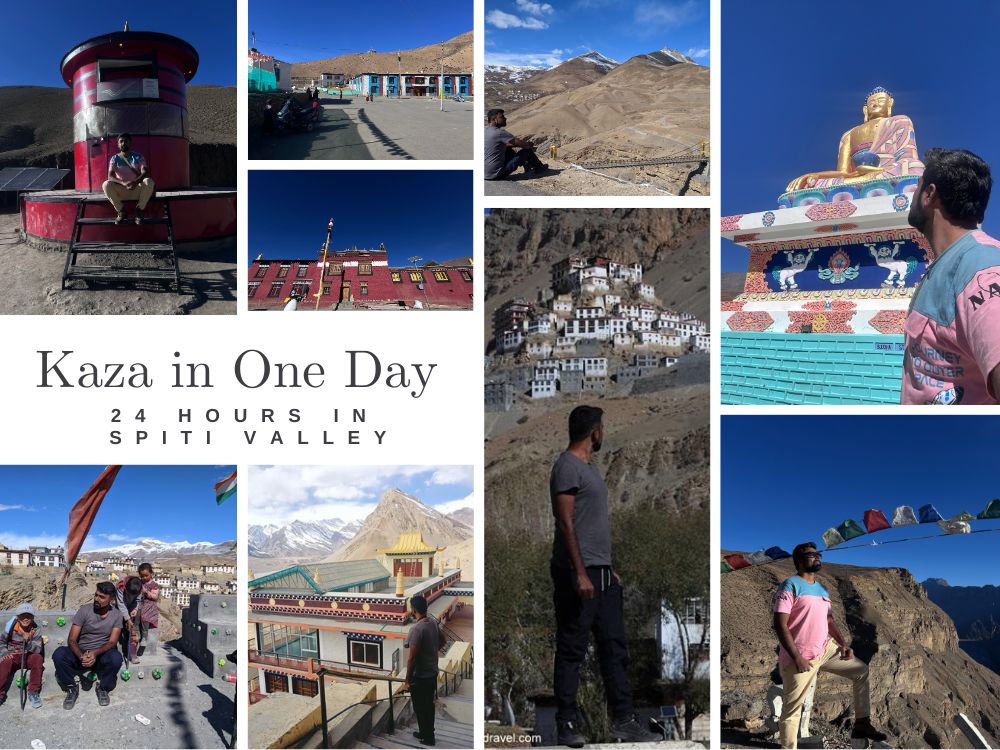What if you are in Spiti Valley for 24 hours only? Maybe you have to leave the very next day. Maybe you came unplanned and it’s just one day in Spiti. Kaza in one day may sound rushed, but it is absolutely doable. You just need to plan smart and stay present. Yes, you may not be able to cover all the places. You need at least 3 to 4 days to explore the iconic places in Spiti Valley at a relaxed pace. But if time isn’t on your side, you may have thought about how to cover Spiti Valley in one day.
The truth is, you can’t see everything, but you can still experience enough to carry the essence of Spiti with you.
I have been to Kaza twice and explored some major places in the Spiti Valley during both trips. I divided my journeys into parts and covered different spots each time. From monasteries perched on cliffs to villages that feel like they’re hanging at the edge of the world, I managed to tick off quite a few places across both visits. And that’s exactly when I found myself thinking, can we cover Kaza in one day?
Kaza in One Day Itinerary: A Lazy Traveler’s Power-Packed Guide
Well, honestly, the idea of covering Kaza in one day sounds a bit unrealistic at first. Kaza isn’t the kind of place you just check off a list. It’s a feeling, a vibe, something you settle into. But when time is limited and wanderlust is high, even a single day here can leave a lasting mark if you plan it right. During my recent trip to Kaza, I booked a cab and visited 3 iconic places of the Spiti Valley quite leisurely. No rush, no strict schedule, just soaking in the landscapes and letting the day unfold on its own.
So in this blog, I will list the places in two categories, and you can pick whichever one feels more appealing based on your interests and travel style. Note that we are exploring Spiti Valley in one day, so it’s better to brace yourself accordingly and keep your expectations realistic.
Route One: Fossils, Monks, and the World’s Highest Everything
If you are drawn to silence, spirituality, and stories buried deep in Himalayan soil, this route is for you. Langza, Komic, and Hikkim are more than just villages. They are time capsules. Imagine fossil fields that whisper of prehistoric life, monasteries tucked in the clouds, and the world’s highest post office where you can actually send a postcard to your future self.
This route is perfect for those who want to soak in the essence of Spiti Valley through culture, natural history, and the surreal remoteness of high-altitude living.
It was during my second trip to Kaza when I rented a cab for ₹2100 on a Sunday morning and set off to explore fossils, monks, and the highest post office in the world.
1. Langza – The Fossil Village
Langza is where time sleeps in stone. The village is known for its marine fossils, remnants of an ancient seabed that once covered this region. You can spot fossil imprints lying casually on the ground as if the mountains themselves are offering you souvenirs from a forgotten era.
The first thing you notice when you reach Langza is the towering Buddha statue, peacefully watching over the village with snow-capped peaks in the backdrop. I stood there for a while, breathing in the silence and the cold wind brushing my face. There is not much noise here, just the sound of stillness.
Langza is also a good place to interact with locals or pick up a handmade fossil replica. Just do not try to take actual fossils home. That is illegal and honestly, the mountains deserve better than being broken apart.
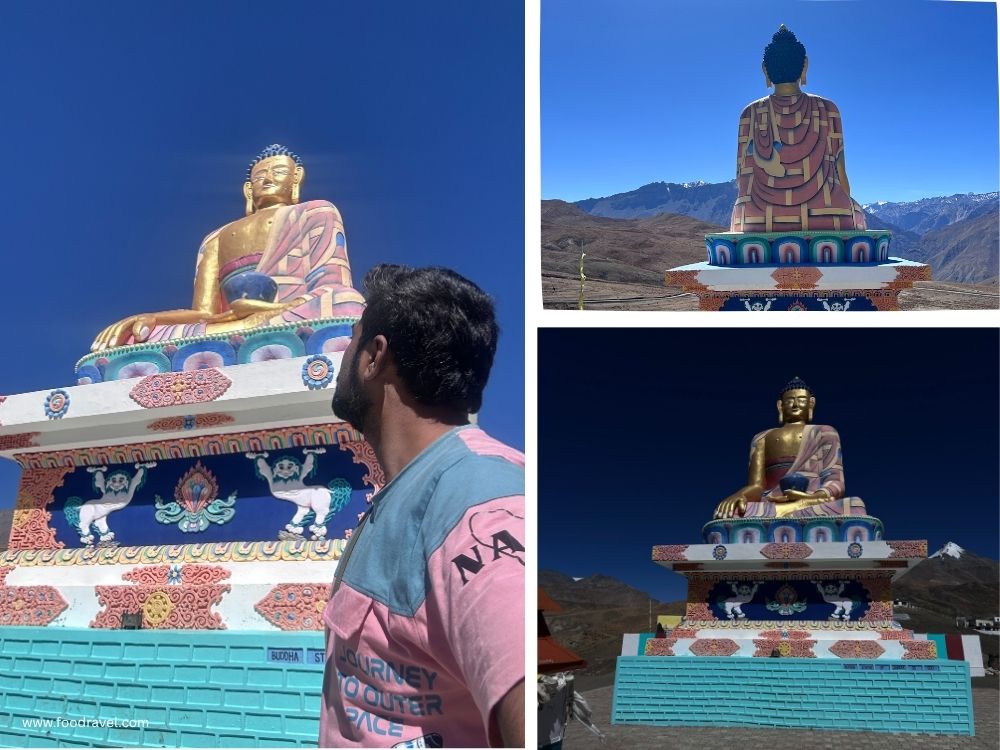
2. Komic – The World’s Highest Monastery
From Langza, a steep winding road takes you to Komic, home to the world’s highest motorable monastery. The village itself is small, humble, and quiet. But there is a certain energy here that does not need words.
The Tangyud Monastery is the soul of this village. I entered and felt wrapped in calm. A monk smiled at me as if he already knew I was carrying questions. Maybe I was. Maybe that is why people come here.
If you are lucky, the monks might offer butter tea or let you sit in during prayer time. Even if you are just passing through, the views from Komic are unreal. Endless valleys, jagged peaks, and a sky that feels like it is sitting just above your head.
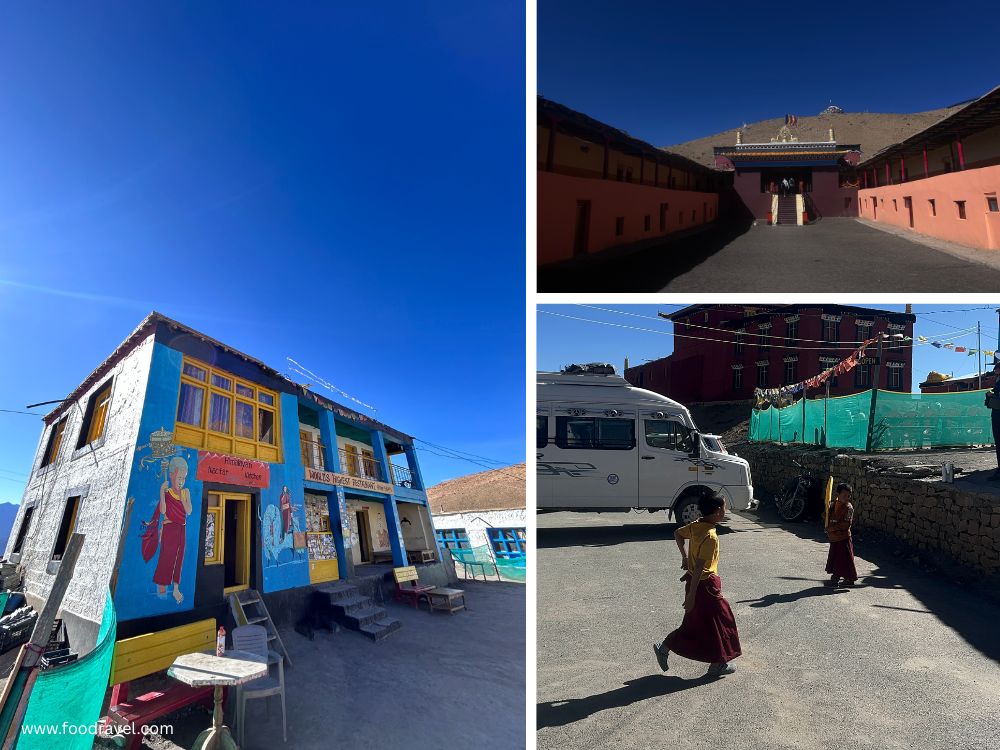
3. Hikkim – The Highest Post Office in the World
Hikkim is known for one rare thing. It has the highest post office in the world, sitting at over 14,500 feet. It is a real working post office with a red door and whitewashed walls. The postmaster has probably seen more Himalayan winters than most of us have seen deadlines.
I wrote postcards to friends and even one to myself. There is something comforting about sending a piece of your journey back home through the slowest and most honest way of communication. The postmaster took the cards, stamped them, and told me they would travel across valleys, passes, and borders to reach their destination.
Even if postcards are not your thing, standing here feels like ticking off something rare. Hikkim is not just a stop. It is a memory.
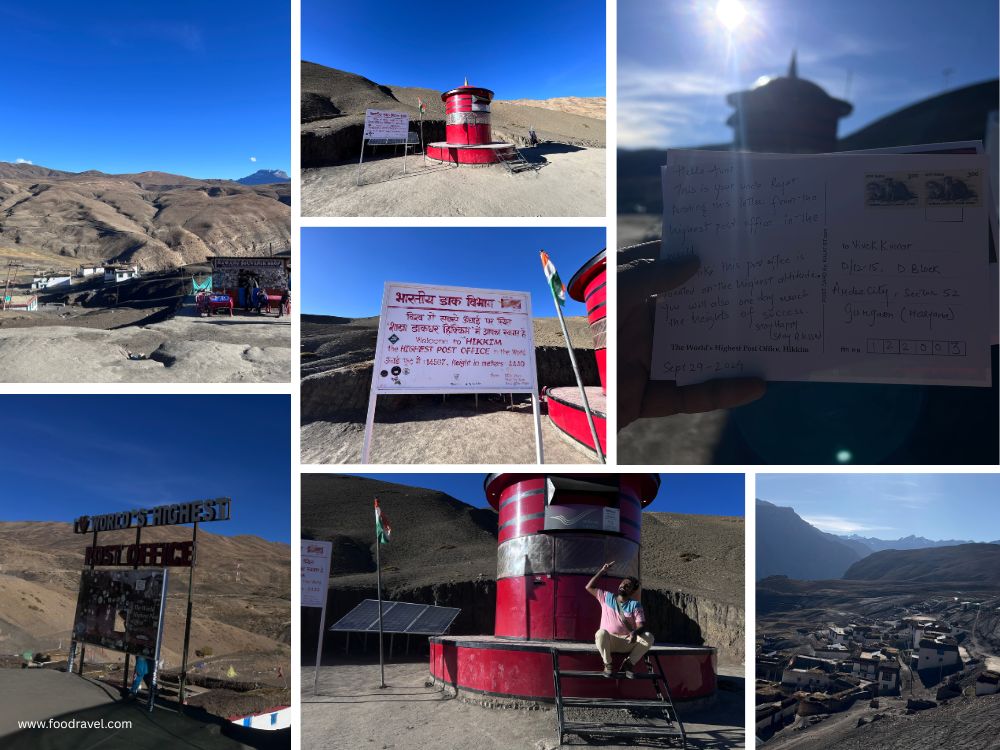
Route Two: Bridges, Monasteries, and Villages in the Clouds
If you prefer dramatic landscapes, iconic monasteries, and thrilling Himalayan engineering, this route is your pick. Key, Kibber, and Chicham are some of the most visited places in Spiti Valley and for good reason. These spots are bold, beautiful, and give you a true sense of scale, both in terms of altitude and awe.
I covered this route during my first visit to Kaza. It was my introduction to the iconic places in Spiti Valley, and honestly, it set the bar high for everything that followed.
1. Key Monastery – The Crown of Spiti
Key Monastery is not just a place of worship. It is the heartbeat of Spiti’s spiritual and cultural identity. Perched dramatically on a hill, it looks like a fortress from afar. Once you reach the top, it feels like a world of its own.
I walked through its narrow corridors, past old murals and butter lamps, while chants echoed faintly in the background. If you ask politely, the monks might even let you sit for a while inside the prayer room. I sat there in silence, letting the stillness soak in.
From the terrace, the view of the Spiti River snaking through the valley is unforgettable. It is one of those scenes that makes the journey feel worth every turn and bump on the road.

2. Kibber – Life at the Edge
Just a few kilometres ahead lies Kibber, one of the highest inhabited villages in the world. The drive to Kibber is short but scenic. Wide open skies, endless mountains, and dry wind that smells like freedom.
Kibber is peaceful. Life here runs slow and simple. I saw locals sitting outside their homes, wrapped in shawls, sipping tea while the sun played hide and seek behind the clouds. There is also a wildlife sanctuary nearby, where snow leopards are occasionally spotted during winter, though I was not lucky enough to see one.
If you want a glimpse into Spitian life at high altitude, Kibber is the place.

3. Chicham – The Highest Bridge in Asia
From Kibber, you reach Chicham Bridge, a jaw-dropping piece of engineering suspended over a deep gorge. It is the highest bridge in Asia and definitely one of the most thrilling sights in Spiti.
Standing on the bridge, with nothing but the sound of the wind and the yawning gap below, was something else. I took a deep breath, looked down, and instantly felt that weird mix of fear and excitement.
The backdrop of snow-dusted peaks only makes the scene more surreal. Chicham is less about spending time and more about feeling the altitude under your feet.
So this way, you can make the most of your Kaza journey in one day without feeling like you missed out.
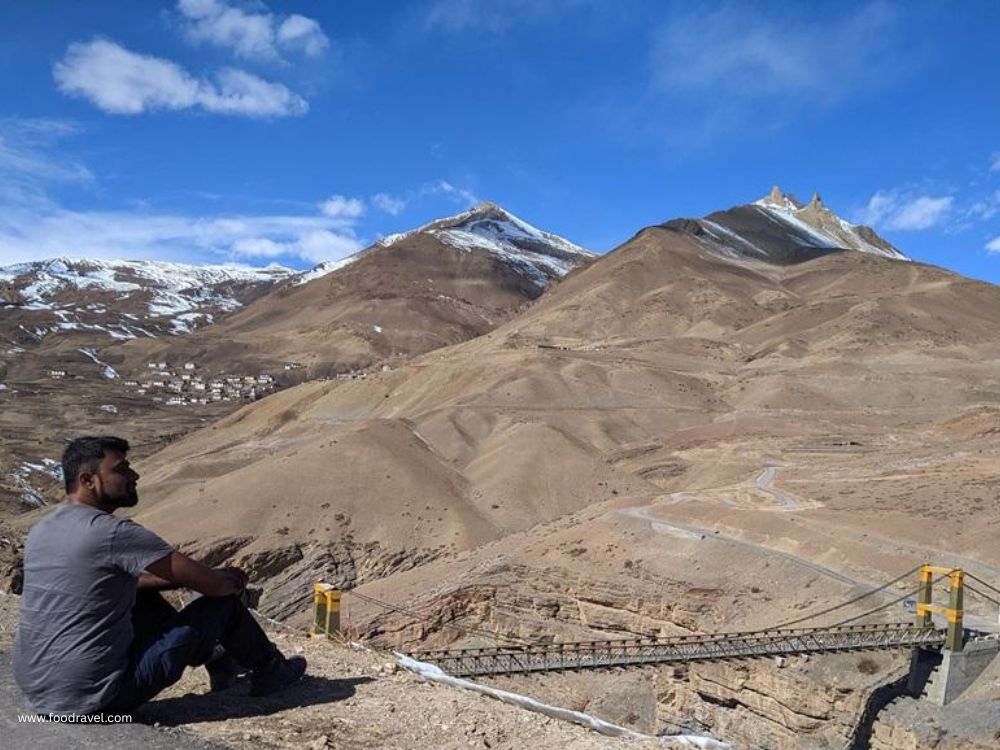
How to Explore Kaza in One Day
I believe the best way to explore Kaza in one day is by bike. You can rent a bike for the full day, start early, and leave the town behind as the morning sun begins to warm the cold mountain air.
Riding through the high-altitude desert with nothing but silence, mountains, and winding roads around you is an experience in itself. It gives you the freedom to stop wherever you want, take photos, soak in the views, or just sit in silence with Spiti all around you.
If biking isn’t your thing, hiring a cab is the next best option. That’s what I did on one of my trips, and it was equally rewarding in its own slow, comfortable way.
You can also hire a cab and negotiate the price based on the route and time. I remember I was quoted ₹2200 for Route Two during my second visit. We settled on ₹2000, and I later paid ₹100 extra because the driver was quite friendly and ended up being my local guide too. For Route One, during my first trip to Kaza, I think I paid around ₹1800.
Having a local driver not only saves you time but also helps you understand the places better. They often share little details and stories you won’t find in guidebooks.
If you are in a group of 3 to 4 people, hiring a cab is a great option. You can easily split the cost and travel comfortably. If you are traveling solo, it is still worth contacting local cab drivers. Sometimes they already have other leads or travelers looking to share a ride, and you might be able to pool in and save some money while making new connections on the way.
![]()

